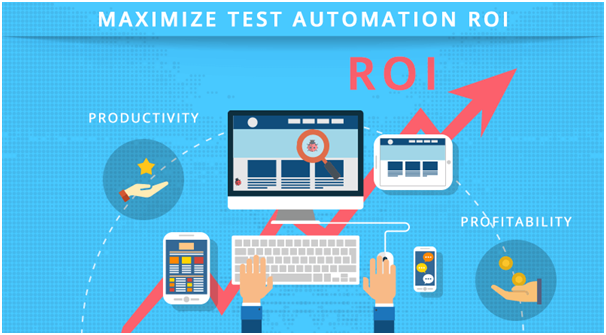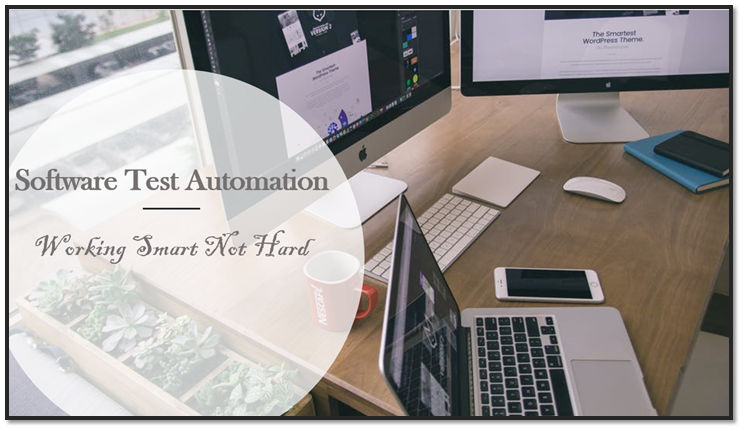“It’s Automation, not Automagic.” – Jim Hazen.
Indeed, when it comes to software testing automation, there is a general trend that automation of testing means there is hardly anything we need to do. Everything will be done by the testing tools and lo, here we have a fully tested and robust product before us. But that’s a myth for sure. Test Automation is surely here to help you automate manual processes but does demand a certain set of procedures to be thought of and performed much before you start your testing. It becomes important for the enterprise to make the most of automation testing services and garner the maximum return on investment from it. Test automation can help achieve enhanced quality and maximized RoI. But what happens is enterprises take up automation testing in order to speed up the testing process and thereby increase the stability and quality of the product but do these test automation processes really live up to the mark? It is very important to ascertain that whatever test automation process you imbibe, leads to the accurate result that you desire and for that, there have to be certain predefined parameters that need to be ensured before testing starts.
Automated testing tools like Cucumber, Ranorex, SPECflow, etc. are meant to speed up the testing process, run repetitive procedures, improve software quality and thereby generate results much faster and with a better output. Hence, analyzing and judging the actual outputs through return on investment is essential, and performing a round of prior judgments would surely turn beneficial and give the best of results.
10 Key Guidelines to Ascertain Optimum Automation Testing Services
- Pre-Select Test Cases to be Automated
In this huge heap of testing to be done, it is very important to understand the needs at first and then decide amongst the entire chunk, what all will be a part of the test automation process. Not everything can be automated and is not even needed to. Based on the multitude of parameters like the environment, hardware, software, framework, geographical locations, infrastructure, etc., the testing scenario may differ at each place and once the list of testing cases are finalized, it becomes a simple task to take it forward. Even tests that need no repetition and are to be performed just once need not be a part of automation at all. Those who are more prone to errors and need multiple rounds of testing should essentially be a part of automation testing.
- Choose the Most Appropriate Testing Tool
With advancements in technology, the plethora of testing tools is unmatchable. There are so many tools available in the market that the enterprise needs to first identify which tool fits their needs and suits the bill in all terms. Platform support, OS support, resource flexibility, easy creation of testing scenarios, simple maintenance, and implementation, robustness, etc. are some of the major attributes that need to study in-depth while choosing the apt testing automation tool, apart from, of course, the main things like budget, performance, and security.
- Imbibe Continuous Integration
Continuous Integration is the latest jargon today. Build, testing, deploy and keep repeating at every stage of the project is what works today. No longer do project build in its entirety and then go in for testing and deployment. Each unit undergoes the entire cycle right there and hence, whatever is to be caught will be done beforehand. Test automation along with continuous integration brings in higher productivity and a highly stable and quality-rich product.
- Automate Few Modules First and Then Approach the Whole
It is always wise not to plunge the entire project into test automation mode, since whatever risks or hurdles are encountered, will affect the project as a whole and that surely brings in a lot of wasted time, effort, and money. It is better to choose a few stable modules and start off automation in those and take up the others later one by one, linking them internally and thinking of the best possible approach so that there is no interdependency link therein. This is a sure-shot revenue booster for the organization.
- Distribute Efforts Within Resources Based on Testing Skills
Although testing may come out as a single process, there are individual tasks that form the major processes to be carried out and not all testers know everything in that. There could be certain testing team members who are experts at writing at test scripts, some knowing the tool very well, and few known best to writing test cases and so on. It is advisable to distribute the resources based on their skills and allot testing jobs correspondingly so that the output is faster, efficient, and effortless.
- Generate Enriched & Relevant Test Data
After all, however good is the testing automation process and resources and tools, it is basically the data that is going to be churned in the process and will yield the results to its optimum. Hence, the crux of good testing lies in collecting and generating good quality test data, which is quite relevant to the test scripts and test cases. Test data could be collected in various formats like excel sheets, text files, XML files, database files, etc. but what matters most is the accuracy and correctness of the same. It is also vital to gather the latest and up-to-date information which covers almost all scenarios and functionalities within the system so that the finest testing automation is carried out.
- Build the Process Beforehand
Prior to jumping into all of the above, what should be done primarily in the building of a testing process that chalks out the entire plan of action along with testing details and probable risks and challenges associated with it. This will lead to a thoroughly well-planned testing process, highly effective and efficient.
- Include Routine Actions in Test Automation
In any testing scenario, there are certain tasks such as setting up data, reporting test results, etc. which aren’t very interesting for testers to perform. Such tasks should essentially be taken up as a part of testing automation as far as possible so that the testers are glued to their task with interest and dedication. This surely brings in higher output and yields maximum returns, since testers now can concentrate on skillful and important jobs rather than waste their time and energy behind monotonous jobs.
- Prepare Test Cases that Don’t Disturb User Interface Alterations
Usually, test scripts and test cases are written in such a way that they get disturbed with any alterations in the UI and that leads to an upheaval in the upcoming test runs. Hence, it is always wise to create tests such that they don’t get disturbed once the UI is changed. This will stabilize the entire testing setup and yield good results.
- Never Try to Encompass All Tests in Automation
With such huge setups, it is never feasible to include each and every testing component in the automation cycle. There would be umpteen combinations that would not get covered and hence focus should be more on the important ones, which are essentially needed under the automation umbrella. The rest can be taken need-based or on a manual mode.
SPEC QA, as an Automation Testing Services Company in India, offers independent QA and Testing Services across the complete software release lifecycle. As an ISO 9001:2008 company, we guarantee a process-driven approach in all our quality assurance practices and software testing services. Our Third-Party Software Testing Services make certain an accurate blend of Manual and Automated Testing and provide support through the Testing Life Cycle. As a Third Party Software Testing Company in India, we possess skilled resources in Automated Testing tools like Selendroid, Selenium, Appium, Robotium, Quick Time Pro, etc. and Performance tools like JMeter, hp Loadrunner, BlazeMeter, etc. which help in simulating scenarios and performing continuous routine mundane tests.
With a stringent focus on quality and processes, we have been implementing several web app testing services in a multitude of technologies.






